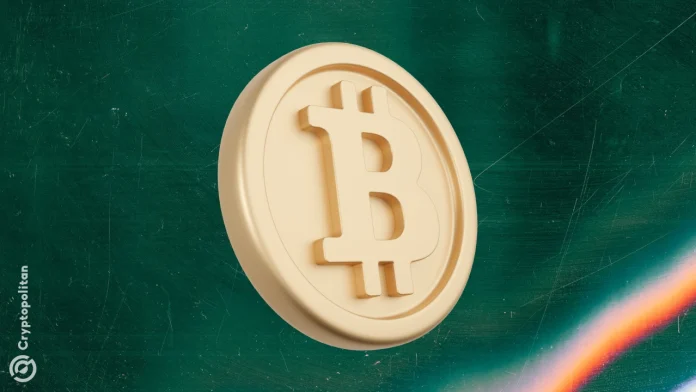The first half of 2025 arrived with several price records. This cycle turned out differently, as whales tended to hold, instead of distribute.
Since January 2025, a trend of holding has established itself for BTC. The liveliness metric shows that, compared to previous rallies, the current market has not led to coin distribution. Liveliness is a metric of how many coins are spent versus how many are held, and reflects directly on-chain activity. Large holders preferred to accumulate coins, turning into long-term BTC supporters.

Since the start of 2025, the liveliness metric points to a holding trend, rather than distribution. BTC has also not seen panic-selling or capitulation during this year’s bull market, as retail already liquidated its holdings during previous bull markets.
The recent trend of holding arrived at a time when BTC fluctuated in a new tight range, mostly above $100,000, with the occasional dip to the $80,000 range. This time, even the market drawdown did not create panic-selling. The recent accumulation continued as BTC traded above $109,000 during the latest market recovery. Later, BTC jumped again to $110,360, on track to new all-time peaks.
BTC transactions slow down
The 2025 market cycle also continues without a deep correction, as drawdowns rarely exceeded 25% of the market price. The perception of BTC also changed, turning from a speculative asset to a store of value.
BTC transaction fees also indicate extremely low on-chain activity. Transaction fees range between $0.15 and $0.30, despite the price hovering within a few thousand dollars of a new all-time high. During previous market rallies, transactions would pick up for BTC, often creating network congestion. This cycle, even near-record prices, rarely spikes on-chain activity.
At the same time, BTC accumulates into a new set of wallets, with the most rapid growth among wallets holding 100-1,000 and 1,000 to 10,000 BTC. The trend was especially clear in June, when whales accumulated a record 800,000 BTC in a single month.
New wallets also shift to holding
Almost all cohorts have shifted to holding, though short-term wallets sometimes distribute coins and tokens. Based on the holder heat map, all wallets aged six months or over have gradually increased their balances.
By the end of June 2025, around 62% of BTC had not moved for over 12 months. Briefly, some of the whales distributed their coins, though not as dramatically as in previous market cycles. The biggest redistribution followed the 2018 rally, where only 42% of coins remained unmoved in older wallets.
The current holding trend also comes from corporate buyers, who are buying new BTC almost daily, with the goal of holding for the long term.
2025, to date, has also shown much more lively inflows of BTC into accumulation addresses. BTC exchange reserves and OTC desks are getting depleted, while coins accumulate in whale wallets, including custodial services.
At the same time, speculative trading mostly relies on perpetual futures, using stablecoin liquidity, with little demand for storing and sending BTC.
Your crypto news deserves attention – KEY Difference Wire puts you on 250+ top sites




